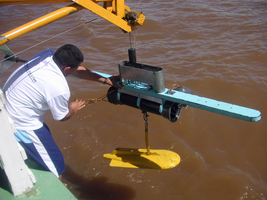WP 2: Dissolved Metals in the Global Water Cycle
The chemical interaction between rocks and atmospheric fluids (e.g. water, carbon dioxide, oxygen) releases metals to soil- ground and river water, and finally to estuaries and oceans. Quantifying and understanding the behavior of metals in the water cycle is of crucial societal importance as rivers transport metals derived from pollution that induce metal toxicity in those ecosystems. Furthermore, the roles played by ground water and chemical reactions between water and particles in estuaries are often under-constrained. In this WP, we will follow this release and transport of metals from the site of weathering to the oceans, through both dissolved and particulate riverine matter. Our aim is to understand how weathering processes influence isotope signatures at the catchment scale, and how the resulting signal is modified on its journey to the oceans. The results from WP1 concerning isotope fingerprints of weathering processes will be upscaled to larger catchments in this WP. An important output of this WP is to provide a “novel isotope toolbox” for using these stable isotopes in river water and particulates to yield constrain on water transport through catchments.
WP Leaders
Jérôme Gaillardet, Institut de physique du globe de Paris
Rachael James, University of Southampton



